An automotive supply chain in transition – the year in review
This year has seen investments in supply chain resilience and the adoption of digital technology across the global automotive sector continue, with some positive developments in terms of inbound parts deliveries and greater supply chain transparency supported by digital technology, though strike action by the United Auto Workers union has taken its toll on production in the US in the fourth quarter.
At the same time, while there have been ongoing capacity problems in finished vehicle logistics there are signs of improvement thanks to harmonised intermodal connections.
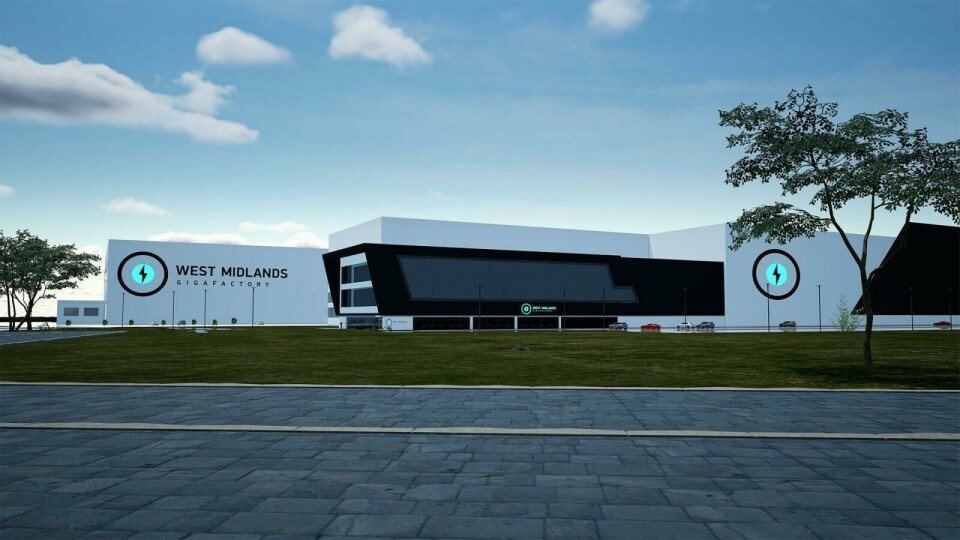
Investments in the transition to battery electric vehicle (BEV) manufacturing have continued throughout 2023, though fortunes have been mixed according to region and quarter. Nevertheless, the drive to more localised production and supply continues.
In the UK, the year began with the disappointing news that Britishvolt’s manufacturing plans had collapsed because of insufficient investment. The localised production and supply of lithium batteries in the UK is essential for the future of domestic manufacturing and the Britishvolt factory was forecast to be the UK’s first largescale battery manufacturing facility, with annual capacity for 300,000 units, equal to 48 GWh. Australia’s Recharge Industries said it would take over the business, though its first focus was on energy storage rather than supply for EVs, and since then the start-up has run into financing difficulties like its predecessor.
However, there were more positive developments for the UK’s future EV manufacturing in April when JLR announced it was investing £15 billion for EV production in the UK, including the supply of electric drives and batteries from its Wolverhampton Engine Manufacturing Centre (pictured). JLR will produce three new EVs at the Solihull plant and develop a medium-size electrified modular architecture for SUV production at Halewood, which will be used to make an all-electric Range Rover from 2025.
In July, Tata Group, which owns JLR, also confirmed it would build a £4 billion ($5.2 billion) battery cell gigafactory in Somerset in the UK, establishing a regional battery supply chain for the carmaker.
That good news got better toward the end of the year when Nissan announced it is expanding its local EV supply chain by investing £3 billion ($3.8 billion) in its EV36Zero hub in Sunderland to build three new gigafactories for its EVs. Furthermore, private investment has been met with government support with the recently announced £2 billion Advanced Manufacturing Plan, which includes a new Battery Strategy that will see £50m of government funding allocated to deliver a globally competitive battery supply chain by 2030.
Battery localisation in Europe
Across the Channel in mainland Europe there is also a push to localise battery EV production by carmakers there who want to compete in a global market, and one which is dominated by China. Europe is currently a target for China’s EV exports and battery experts and, according to Schmidt Automotive Research, Chinese brands exported 280,000 vehicles to Europe in the first 10 months of this year.
At this year’s Automotive Logistics and Supply Chain Europe conference, held in March, carmakers laid out their plans for localising production, including the import of gigafactory equipment needed to produce EV batteries.
Matthias Braun, head of battery cell logistics at PowerCo, VW Group’s own battery company, outlined that 40% of the value in a vehicle was the battery but that 95% of battery suppliers were based in China and wider Asia. PowerCo is already working on its own gigafactory in Salzgitter, Germany, and has announced a second gigafactory to be based in Sagunto, near Valencia in Spain.
Further developments in Europe announced this year included Automotive Cells Company (ACC), which officially opened the first of three planned European battery gigafactories in Billy-Berclau, Douvrin, France.ACC, of which Stellantis, Mercedes-Benz and TotalEnergies are key stakeholders, said the gigafactory will develop “a new generation of sustainable and efficient batteries” for electric vehicles (EVs).
BMW has also opened a battery cell pilot close to Munich to help it standardise and increase production and supply chain processes across battery manufacturing and supply. The Cell Manufacturing Competence Centre (CMCC), in Parsdorf, will produce cylindrical cells like those that will be used in BMW’s Gen6 batteries, which will power its upcoming Neue Klasse range of EVs from 2025 onwards.
As the year draws to a close, the European Commission has proposed a three-year extension to EV trade rules between the EU and the UK, a move that has support from manufacturing bodies in both regions.
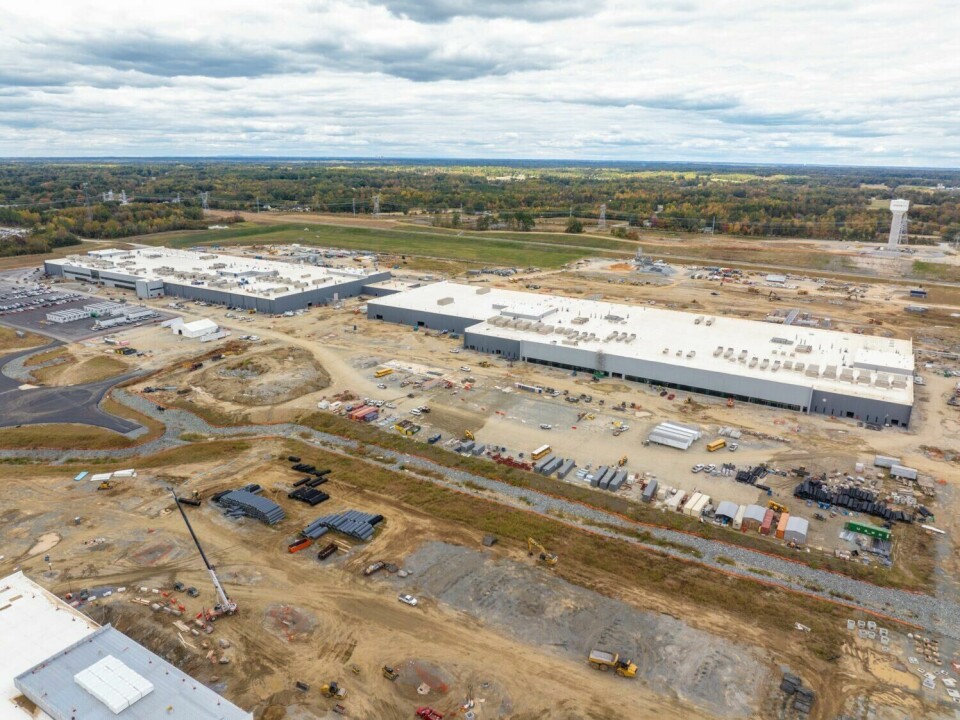
EV plans in North America
Another of PowerCo’s gigafactories is planned for Canada, which is expected to begin production in 2027. It is the company’s first announced battery facility for North America. PowerCo has plans to invest €20 billion ($21.9 billion) by 2030, and those plans are quickly becoming reality, as Braun explained further in an interview with Automotive Logistics.
In February BMW also announced it was investing €800m in its San Luis Potosi plant in Mexico to produce new-generation EVs based its Neue Klasse EV architecture from 2027. In support of that, the carmaker is setting up its own 85,000 sq.m battery assembly facility on site, which will account for €500m of the overall investment.
Private investment in EV and battery production in North America has been given strong support by government-funded initiatives as seen through the Inflation Reduction Act and the Bipartisan Infrastructure Law. That was followed In April this year with the signing of an agreement on the supply of critical minerals to support EV battery production.The ‘Agreement Between the Government of Japan and the Government of the United States of America on Strengthening Critical Minerals Supply Chains’ builds on the existing US-Japan Trade Agreement signed in 2019 and, according to the Office of the US Trade Representative “will strengthen and diversify critical minerals supply chains and promote the adoption of electric vehicle battery technologies”.
Transitioning to EV production is complex, particularly with changing regulations and standards, but the solution to this is collaboration and communication. “The standards are ever changing, so our approach is to work with strategic expert advisors so we can better share our strategy,” said David Leich, executive director, Global Supply Chain, GM at this autumn’s ALSC Global conference. ”We have a vertical integrated approach and we can share that strategy with our providers and have a network plan that means we can have a safe network in our supply chain that meets all requirements and standards.”
In June, GM signed a definitive agreement with battery material supplier Element 25 to support the production of more than 1m electric vehicles (EVs) annually in North America. The Australia-based Element 25 will supply GM with 32,500 metric tons of battery-grade high-purity manganese sulphate, a metal that is used as a raw material for the cathode precursor in many lithium-ion batteries, over seven years. GM said the agreement “continues to strengthen GM’s domestic supply base for EV production”. The carmaker also announced it was investing in Lithium Americas to secure the supply of lithium carbonate from the Thacker Pass mine in Nevada, US as it works to secure meet its goals for battery and EV production in North America.
In another move, in November Toyota said it was adding $8 billion of investment to its Toyota Battery Manufacturing North Carolina (TBNMA) facility in the US, which is currently under construction. It brings total investment in the plant to $13.9 billion and the creation of 5,000 jobs.
Securing the semiconductors
Another key component that automotive manufacturers have been keen to secure the supply of this year, after significant post-Covid disruption, is the semiconductor.
In February GM signed a long-term agreement for the supply of semiconductors from wafer fabricator GlobalFoundries. The carmaker said the agreement would establish “a dedicated capacity corridor exclusively for [its] chip supply”. Kamal Khouri, vice-president and general manager for the Automotive Business Line at GlobalFoundries, talked to Automotive Logistics about the benefits of a transparent supply chain when it comes to semiconductor supply to GM in the US.
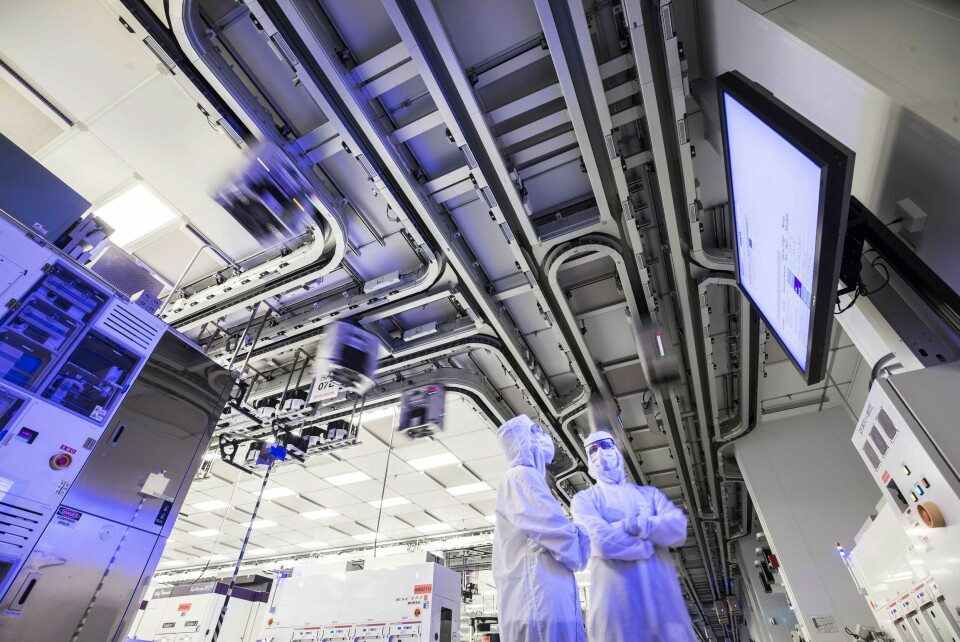
In Europe, VW Group is reorganising its procurement of electronic parts and semiconductors to ensure supply over the long term and avoid the risk of bottlenecks. In September the carmaker said it will now work in close collaboration with tier one suppliers to define which semiconductors and other electronic parts are used in its supply chain. These will be sourced and even directly procured by the group’s new Semiconductor Sourcing Committee (SSC). Previously, these parts were chosen and procured by the tier one suppliers.
Semiconductor manufacturers Robert Bosch, Taiwan Semiconductor Manufacturing Company (TSMC), Infineon Technologies and NXP have also established a plan for a joint venture to invest in a new semiconductor plant in Dresden, Germany. The JV said the plant will “support the future capacity needs of the fast-growing automotive and industrial sectors” and will “further secure” automotive supply chains in Europe. TSMC will operate the fab and hold the majority stake in the JV with 70%, while the other firms will each hold a 10% equity stake.
Digital collaboration
The efforts made to secure key components this year coincide with a general easing of inbound supply shortages is something JLR recognised in its results for the three-month period to 30 September 30, 2023. The company said the growth reflected “continuing improvement in supply, allowing it to deliver more vehicles to clients”.
That improvement of inbound supply of parts and materials has also been given a boost in 2023 thanks to collaborative efforts made to improve shared data quality and supply chain transparency.
The Confinity-X data exchange platform was set up at the end of January this year following a request for service partners issued by Catena-X, a consortium funded by the German Federal Ministry for Economic Affairs and Energy through its funding programme Future Investments in the Vehicle Industry. Catena-X provides a data-sharing platform for small to medium-sized companies designed to support collaborative projects, increase resilience in the supply chain and give greater visibility of material flow. The Cofinity-X joint venture based on the platform involves BMW, Mercedes-Benz and Volkswagen, along with tier one suppliers BASF, Henkel, SAP, Schaeffler, Siemens, T-Systems, and ZF.
However, sharing data to improve quality and efficiency while driving future innovations within the supply chain is a move some are still hesitant to make. At Automotive Logistics & Supply Chain Digital Strategies 2023, experts weighed in on how Catena-X could provide a solution and encourage more trust when it comes to data sharing.
Furthermore, Autoliv’s vice-president of global logistics, Dr Gisela Linge, called for more resilience, transparency, collaboration and digitalisation in an interview with Automotive Logistics in October this year.
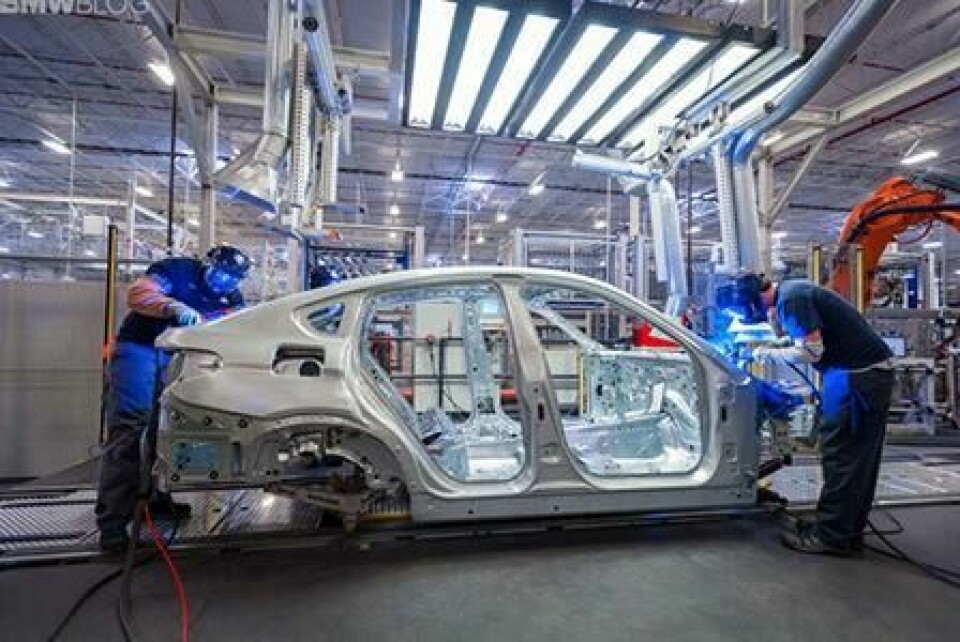
In the US, meanwhile, BMW has enhanced material planning and control systems for its Spartanburg, South Carolina plant across global parts and material transport flows. The carmaker has set up a digital exchange of APIs and material analysts, who have screen and mobile access to these systems, can make quick decisions based on the alerts. In some cases, they follow recommendations and optimisations offered by analytics and AI-based algorithms, as Julia Fuchs, head of material, transport control and delivery assurance for BMW Manufacturing explained in August.
In the UK the carmaker has started a global transformation of manufacturing and logistics at the Mini plant in Oxford, UK. Building around a core warehouse system based on SAP software the carmaker has migrated core functions from legacy systems to a cloud service, having first moved such functions as lineside sequencing and picking to the cloud for smooth transition. During November’s Automotive Logistics and Supply Chain Digital Strategies conference in Munich, Germany, BMW Group’s head of process management and digitalisation, Michael Ströbel, outlined a number of areas where the company was improving inbound supply chain visibility and building greater flexibility into manufacturing.
Outbound capacity crunch
In outbound logistics, the year began with a ro-ro capacity crunch on ocean services that was exacerbated by an increase in EV shipments from China to Europe. The vessel shortage resulting from ro-ro operators having scrapped or laid up assets during the pandemic gave way to a strong resurgence in volume output post-Covid. Finished vehicle logistics providers had been wary of placing new orders for vessels given market uncertainty and the levels of investment required.
That shortage sent up rates for vehicle movements by ro-ro vessel on all lanes because of the shortage in capacity, and as the year draws to a close rates are still high. Clarksons Research revealed in December this year that ocean bound car trade is projected to increase by 17% (yoy) to 23.7m vehicles in 2023, the fastest growing seaborne trade across maritime and surpassing the previous high of 21.5m cars in 2018. That includes strong export growth from Asia including China (4.1m cars projected for 2023, up from <1m cars in 2020).
Europe’s vehicle-handling ports have faced rough seas for the past several years, from the pandemic to chip shortages to disruption from Russia’s invasion of Ukraine. But while 2022 was a year of geopolitical and economic uncertainty, for ports it was also the year when transport and labour shortages came to dominate – a situation that has continued into 2023 and expected to last for several years.
While pent-up volume is likely to level off, pressure on overall capacity looks set to remain, complicated further by rising volume from China and new requirements for electric vehicles.
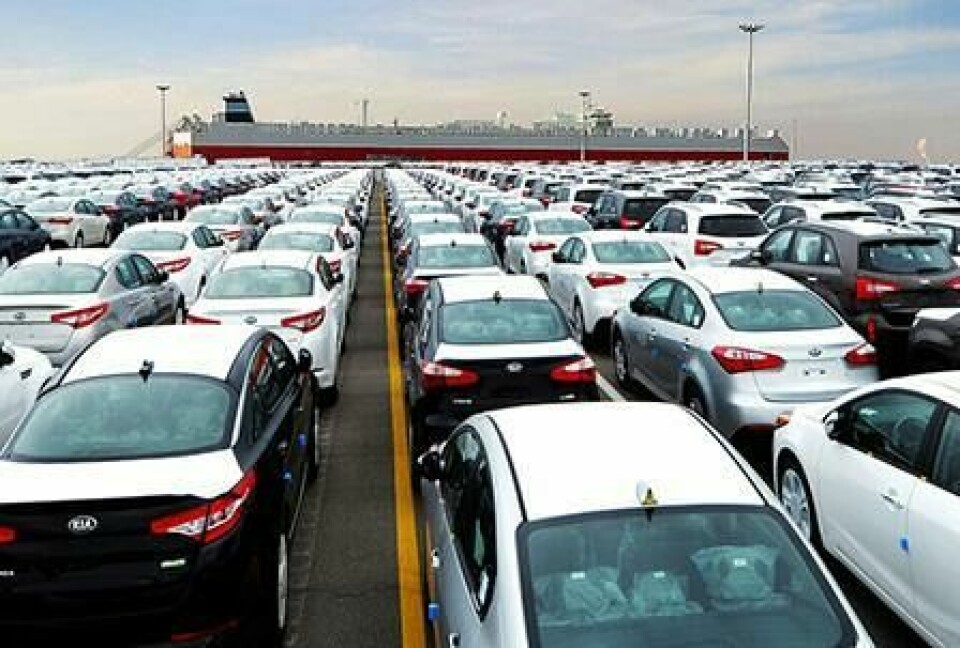
Disruption to the delivery of vehicles at the North American ports caused by capacity shortages affecting road, rail and ocean transport is beginning to ease. There is a mixed picture of losses and gains in volumes, though the gains outdid the losses, at least in Mexico. The port of Baltimore retained its position as the busiest US vehicle-handling port in this year’s review of activity, despite a slight drop in throughput resulting from production delays caused by the semiconductor shortage and restrictions on ocean ro-ro capacity. Veracruz remains the busiest vehicle handling port in North America, and moved more than 856,000 vehicles in 2022, but Lazaro Cardenas has moved up the rankings to third place behind Baltimore and ahead of Brunswick and Savannah. Last year it moved more than 646,000 vehicles. That is a significant increase in vehicle handling, driven by a 74% increase in imports.
New vessel orders
There was a spate of new vessel orders through 2023, including by carmakers attempting to directly secure dedicated ro-ro capacity through purchases or joint ventures with logistics providers. Clarksons Research said that car carrier fleet stands at 760 vessels of 4m ceu, up only 2% on 2019 levels, with a further 80 newbuild orders in 2023 so far taking the orderbook to a significant ~37% of fleet capacity.
Amongst those orders Grimaldi now has build orders for 15 car carrier vessels from Chinese shipyards, each certified to run on ammonia as zero-carbon fuel and each able to carry 9,000 CEUs. Hyundai Glovis announced it was investing $1.89 billion in 12 dual-fuel car carrier vessels that will be able to run on liquified natural gas (LNG). Each ship will be able to carry 10,800 car equivalent units (CEUs) making them the world’s largest pure car and truck carriers (PCTCs). And SAIC Anji, the logistics and shipping subsidiary of China’s SAIC, ordered seven new car carrier vessels, all to be built in China
The ro-ro capacity shortage also led to a higher instance of containerised vehicle shipments in 2023. The container shipping sector saw a better-than-expected recovery toward the end of 2022 and rates dropped into the beginning of this year.
This led to a number of new moves. In October Chinese carmaker Chery Automobile opted to put 10,000 cars in containers for import through DP World’s Yarímca port terminal in Turkey. Other Chinese carmakers are expected to follow suit and benefit from services DP World is providing. DP World also acquired freight forwarder CFR Rinkens in October to bolster the development of its services for containerised vehicle shipments.
One of the bigger buyouts that also affected maritime finished vehicle shipments was Ceva Logistics’ integration of Gefco’s finished vehicle logistics business and the set up its own finished vehicle division, its fifth area of business. Ceva Logistics is part of global vessel operator CMA CGM, which itself integrated Ceva into its business in 2019.
Ceva Logistics signed a ten-year lease on four new-build ro-ro vessels from its parent company CMA CGM in May this year, and will manage and operate them directly. The logistics provider will be able to move 140,000 vehicles annually using the vessels, which will be powered by both LNG and electric battery.
Ceva’s FVL also saw an increase in global demand for containerised vehicle services, as Xavier De Conigliano, global business development leader for finished vehicle logistics at Ceva told Automotive Logistics in an interview back in March this year.
Road and rail in Europe
Capacity constraints across the transport modes for finished vehicle moves were also a concern in terms of land-based services, according to a survey published by Automotive Logistics and Cognosos in October this year.On a global scale, more than a third (39%) of respondents said that truck and road capacity constraints were likely to most severely affect their business in the short-term.
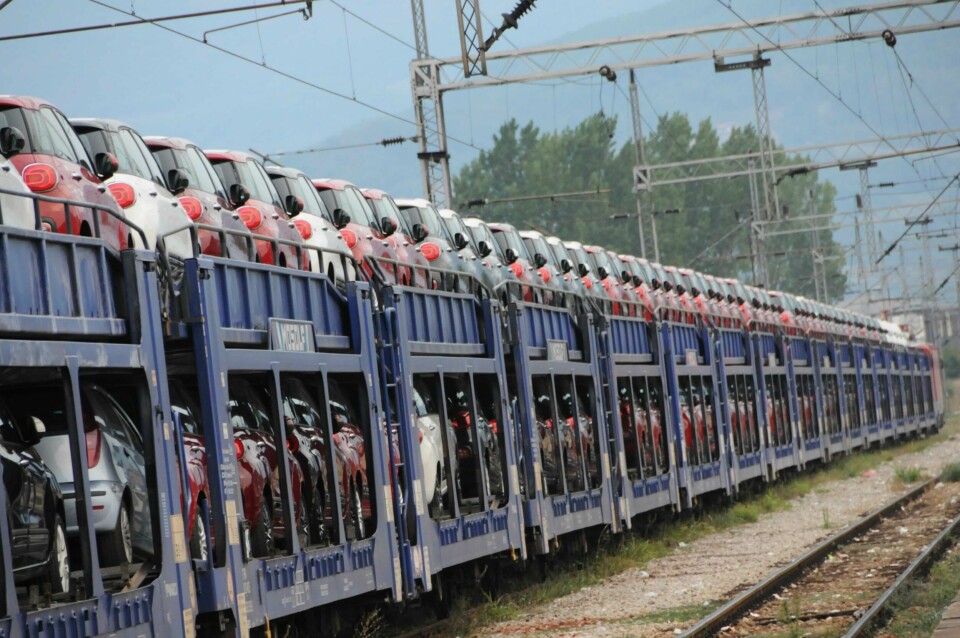
In Europe, the German rail network is in dire need of restoration but now that work is finally going ahead carmakers are facing a decade of disruption and delay to the movement of parts and finished vehicles. Extensive renovation work on the German rail network, which began in 2022, is disrupting the movement of freight and has reduced available capacity for goods movements by more than a third.
Speakers from Volvo Cars, Inform and ECG debated the lack of transport capacity on road, rail and ocean at this year’s ALSC Europe conference and talked about how digital tools could make the most efficient use of existing equipment.
VW Group said it expected vehicle deliveries to rise to around 9.5m units in 2023 and sales revenue to increase by between 10-15% compared to 2022. That growth included EVs and in its performance update for the first nine months of 2023 released in November VW Group said it increased global deliveries of EVs by 45% to 531,500 in the first nine months of 2023, with the battery EV share of total vehicle deliveries increasing to 7.9%. However, it also reported that orders for EVs were down and it was adapting production to demand. The carmaker said the automotive industry was “currently experiencing a general reluctance [by customers] to buy battery-powered models” and that “the overall market trend… fell short of expectations”.
Road and rail in North America
Over in California in May, speakers at the FVL North America conference reported that the shortage in deep-ocean ro-ro capacity for vehicle imports to North America necessitated the rapid set up of a landbridge between the west coast ports and inland destinations to the east.
Meanwhile, Toyota Logistics Services has spent time tackling capacity constraints in the export of its vehicles from the US with a new process to improve sequencing at the ports. Missy Pearlman, general manager of the business, told Automotive Logistics about the new system, which is based on one that Toyota has used for the last 25 years. However it is now using the latest digital technology to enhance that system for detailed by-the-minute scheduling, using real-time information on each stage of the schedule to sequence vehicle movements more efficiently into the port.
In the early part of 2023 North American rail freight providers Canadian Pacific (CP) and Kansas City Southern (KCS) completed the merger they first announced in September 2021. The combined company will have a much larger and more competitive network, operating approximately 20,000 miles (32,200 km) of rail, employing close to 20,000 people, and generating total revenues of approximately $8.7 billion based on last year’s combined results. It will be the first truly integrated single-line North American rail network, something that is particularly important for the movement of finished vehicles given the reduction in hand-off points between carriers which brings improvements in terms of service and cost, and reduces the risk of damage to the vehicles.
On the road, Atlanta-based finished vehicle hauler Jack Cooper Transport entered into a definitive agreement to acquire the assets of Moore Transport, a car carrier firm based in Tulsa, Oklahoma. It has also opened five locations in Mexico this year and added 12 new customers. It is also now looking at providing intra-Mexico car haulage services for the first time.
In the last quarter of the year the Port of Vancouver USA reported a record-breaking amount of imported Subarus processed for the month of October. The success of the distribution of the imports is based on investments in processing and inland distribution as much as returning capacity on the ocean services.
Once unloaded by the Port of Vancouver USA, finished vehicle logistics provider Auto Warehousing provides accessorisation services and prepares them for transport by road and rail to dealers across the US. United Road Services, which has a facility at the port, transports vehicles by truck to dealers throughout the Pacific Northwest.
The Port of Vancouver USA has also accelerated rail throughput since the completion of a $250m project and both BNSF and Union Pacific call directly at the port. Subaru has an almost 50/50 split across rail and road shipping in the US.
The success for Subaru is based on a successful model for intermodal logistics and bodes well for a more harmonised traffic for finished vehicles through the ports and on inland transport in 2024.





